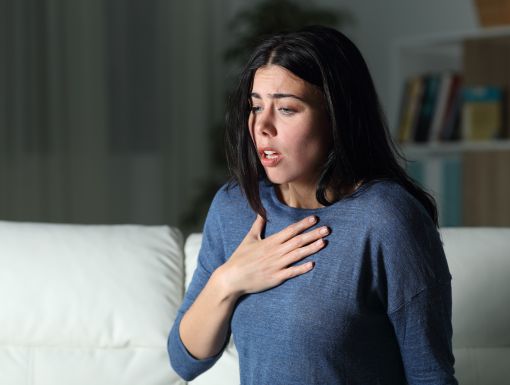
How to Avoid Bringing Coronavirus Home with You
Many of us are living the new normal by staying inside and social distancing to help prevent the spread of coronavirus (COVID-19). However, there are times when you will still need to venture outside to go for a run, go to the grocery or pick up some of your favorite takeout. You may also have packages being delivered to your house, so you don’t have to go to the store. Should you be worried about bring COVID-19 into your home? Below, we’ll go over some common concerns and how to best ensure you are keeping COVID-19 at bay.
How is COVID-19 spread?
Let’s first discuss how people can get COVID-19. The CDC believes that COVID-19 is transmitted mainly through person-to-person infection. Person-to-person infections typically happen between close contact, about 6 feet or closer. Like many other viruses, it is typically spread through respiratory droplets that are produced when someone coughs or sneezes. These germs can then land in the mouth or nose of another nearby person and be inhaled into the lungs. While contact through surfaces is not thought to be the main form of transmission, it is still possible to get COVID-19 from surfaces that may have the virus on it. If someone sick with COVID-19 coughs into their hand, then touches a doorknob that you touch soon after, you risk getting COVID-19 if you then touch your mouth, nose or eyes. That is why it is very important to frequently wash your hands, especially after going to the bathroom, before eating or after you cough or sneeze, and wipe down high-touch surfaces in your home.
Can you get COVID-19 from food?
The CDC says there is currently no evidence to support the transmission of COVID-19 through food. After you go to the grocery store, you should wash your hands for at least 20 seconds with soap and water. If soap is not available, you may use a sanitizer containing at least 60% alcohol.
When you are shopping at the grocery store, avoid touching multiple items. For example, instead of touching many different avocados to find the best one, pick up the best ones based on looks. This not only helps you by touching less but helps keep your germs off the produce for others. Also, it is still best practice to wash your produce from the grocery store with clean, running water, which you were probably doing before this COVID-19 outbreak.
Can you get COVID-19 from takeout?
Like grocery store items, there is currently no evidence to support the transmission of COVID-19 through food. It may be possible that a person could get COVID-19 from surfaces, such as a take-out box. However, this is not though to be the main form of transmission. Because of the decreased survivability of COVID-19 on surfaces, there is a very low risk of spread from take-out containers. If you do pick up food, be sure to wash your hands before eating your meal.
Should you disinfect packages or mail?
Again, the transmission of COVID-19 through surfaces is believed to be low. Additionally, there is no know additional risk for packages coming from China. According the CDC, currently, there have not been any cases of COVID-19 in the United States associated with imported goods.
When opening packages, try to open them all in the same spot, near your trash. This allows you to easily throw away or recycle the box or bag. After opening packages, wash your hands and avoid touching your face.
Should I wash all my clothes after going outside?
Unless you are caring for a patient with COVID-19, recently interacting with someone suspected of having COVID-19 or someone coughed or sneezed on you, you do not need to wash your clothes every time you go outside.
If you are caring for a family member with COVID-19 or are a healthcare provider, you should wash all laundry thoroughly using the warmest appropriate water according to the manufacturer and wear disposable gloves while handling soiled items. When you do go outside or bring items indoors, continue to use best practices. Wash your hands frequently, disinfect high-touch surfaces, do not gather in large groups and make sure you are at least 6 feet away from others.
For more information on COVID-19, visit ochsner.org/coronavirus.
In early December 2020, the Centers for Disease Control and Prevention (CDC) updated their recommendations regarding COVID-19 exposure quarantine. While this doesn't apply to healthcare workers and other essential personnel, the guidance now states that quarantine can end after 10 days (rather than 14) with no testing and no symptoms. Quarantine can end after seven days with a negative test and no symptoms.
The information in this blog post is accurate at the time of publication. However, as the situation surrounding COVID-19 continues to change, it's possible that information has changed since being published. While Ochsner Health is trying to keep our blog posts as up-to-date as possible, we also encourage readers to stay informed on news and recommendations by using the CDC website.

